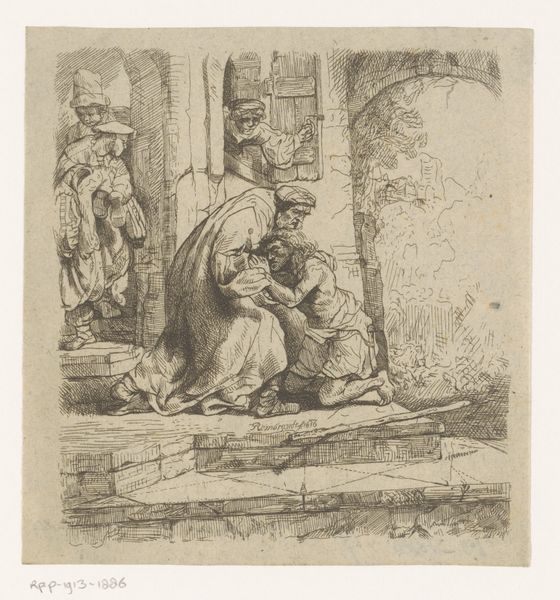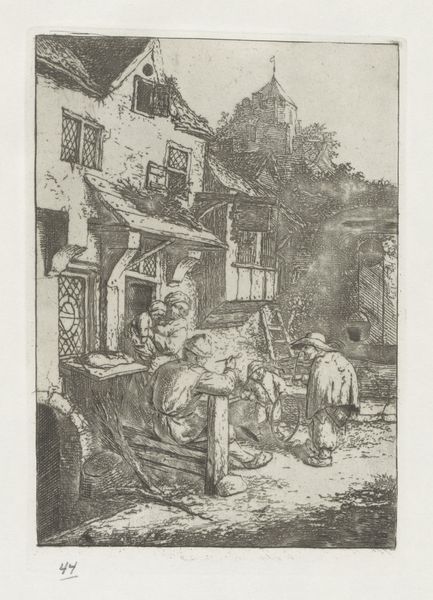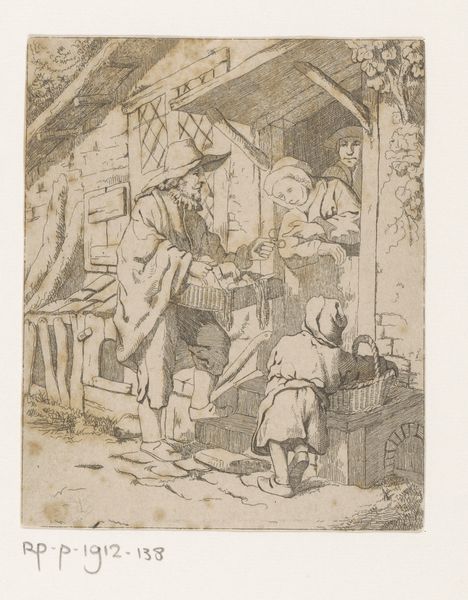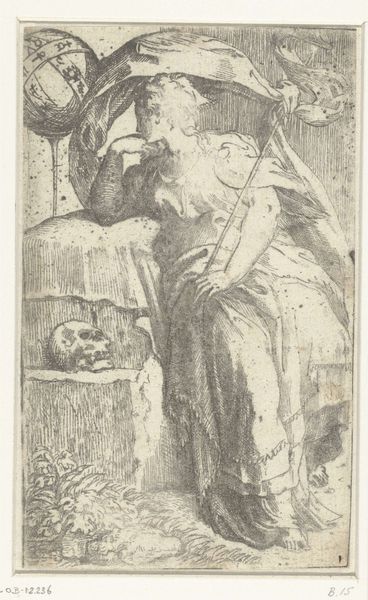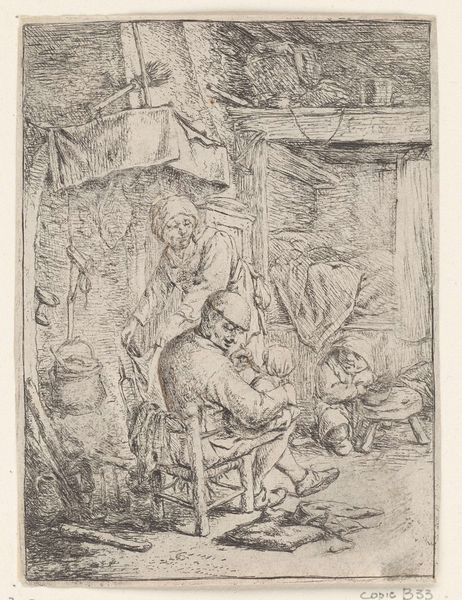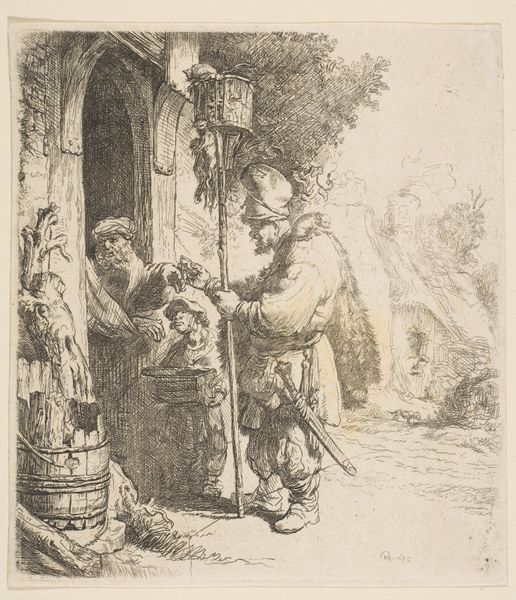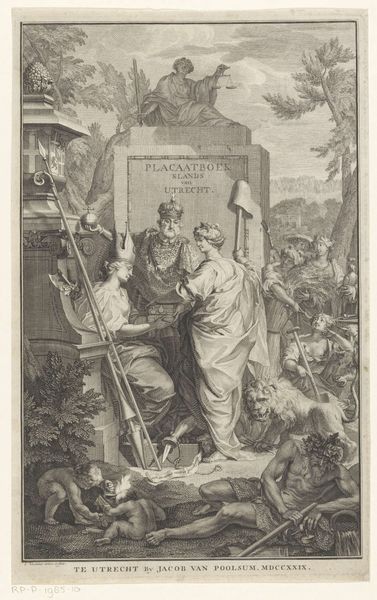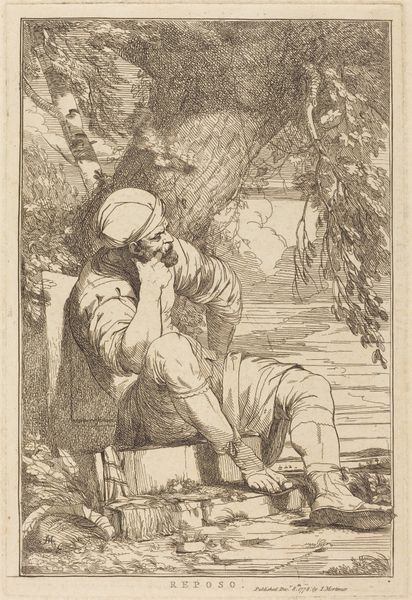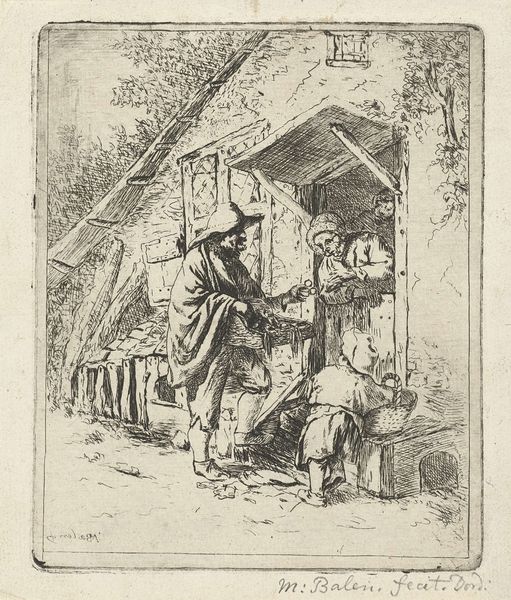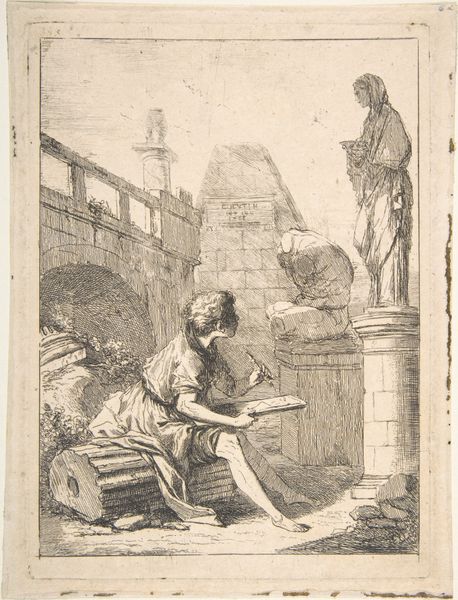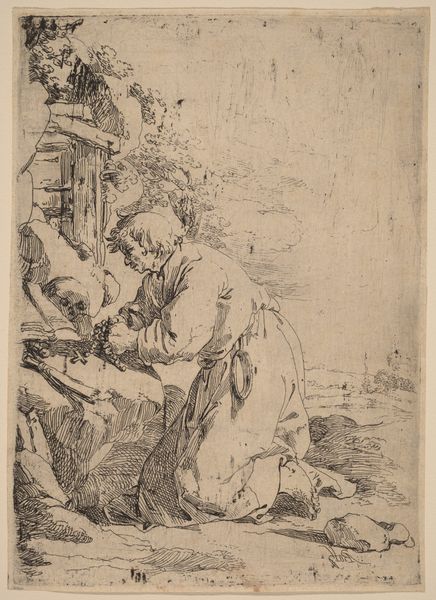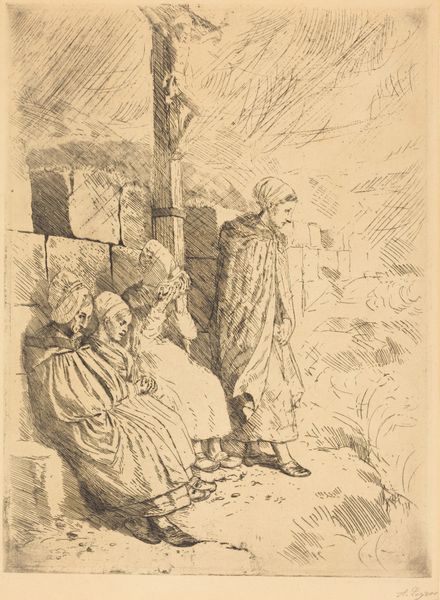
drawing, pencil
#
drawing
#
pen sketch
#
pencil sketch
#
landscape
#
figuration
#
pencil drawing
#
pencil
#
genre-painting
#
realism
Dimensions: height 179 mm, width 143 mm
Copyright: Rijks Museum: Open Domain
Curator: Let’s consider Matthijs Maris's drawing, "The Drunkard's Return," created circa 1856-1857. It’s currently held at the Rijksmuseum. Editor: The texture of the pencil and ink work creates a rather grimy atmosphere, fitting for the scene depicted. I immediately notice the clear social commentary and emotional weight of this imagery. Curator: Absolutely. Maris is embedding a narrative here, right? We see the figure of the drunkard, returning to his home, perhaps to his family. How does the depiction engage with issues of poverty, morality, or even societal neglect of marginalized people during the mid-19th century? Editor: The rendering style seems quite important. Notice how the rapid pencil lines form a clear indication of labor and the quick nature of informal drawings and illustrations made for the masses. This contrasts greatly with notions of academic mastery in traditional, higher art forms. Curator: That makes me consider the placement of the figures. We have the man stumbling home, with his family seemingly reacting to his return from windows and doorways. What does their gaze tell us about their relationships or roles? I think the social expectations of family members and community responsibilities at the time were quite rigid. Editor: Indeed, but consider too the basket above. Everyday items depicted take on new meaning. I suspect that a family without basic necessities are not unlike materials that artisans are often lacking, and that ultimately, materials affect creative potential. Curator: I suppose analyzing "The Drunkard's Return" gives us an understanding, maybe, of how these themes of human frailty and the labor of survival were very much embedded within Dutch Realism. Editor: The making of this piece is intrinsically linked to its content. Both artist and family contend with what they lack and what is left to salvage in their present condition.
Comments
No comments
Be the first to comment and join the conversation on the ultimate creative platform.
